Yes, to both questions.
Working from Photographs, Postcards and Posters
Examples of commercially printed source materials for Buongiorno paintings—widely available tourist postcards, most frequently—beg the question: Did he cheat? Did he copy someone else’s work? Or did he create permitted “adaptations” in a different medium?
Does it matter?
During his whole career, there is ample proof that Buongiorno always intentionally made commercial images to sell. He was never known to experiment with, or mimic modern art (which was widely exhibited in New York City during his period of residence.) Nor try to invent a new art vocabulary, like later modernists, so maybe it is irrelevant that some of his images were not original.
Multiples
Buongiorno painted some paintings more than once, presumably because they were “best sellers.” The record found, so far, is four paintings of the same subject in the same pose—the fisherman lighting a pipe seen below.
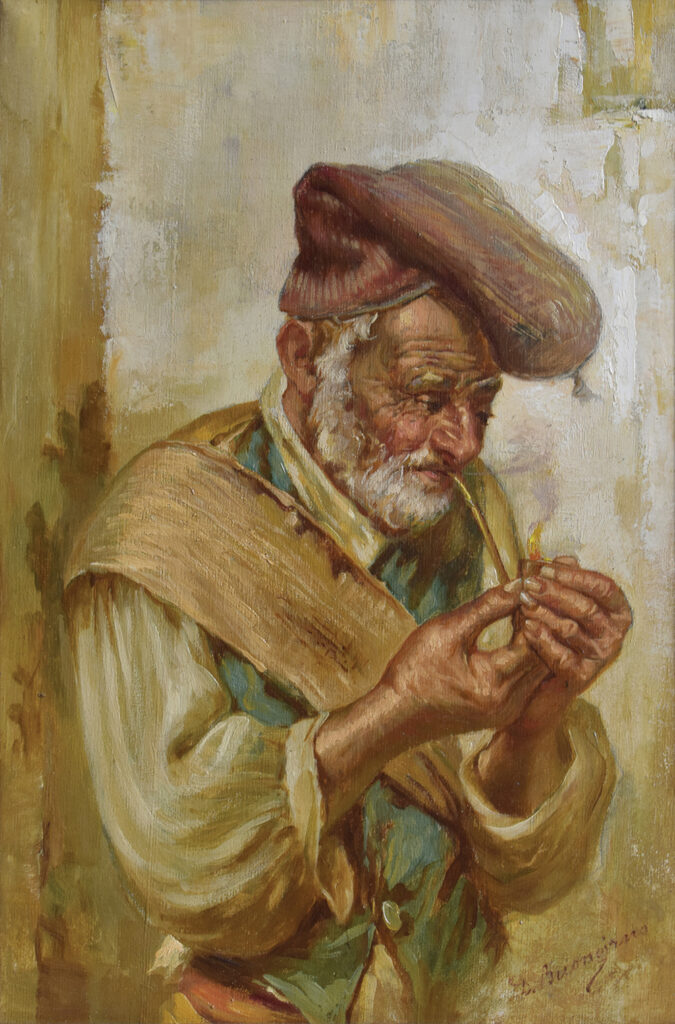
©2013–2019 Individual private collector. All rights reserved.
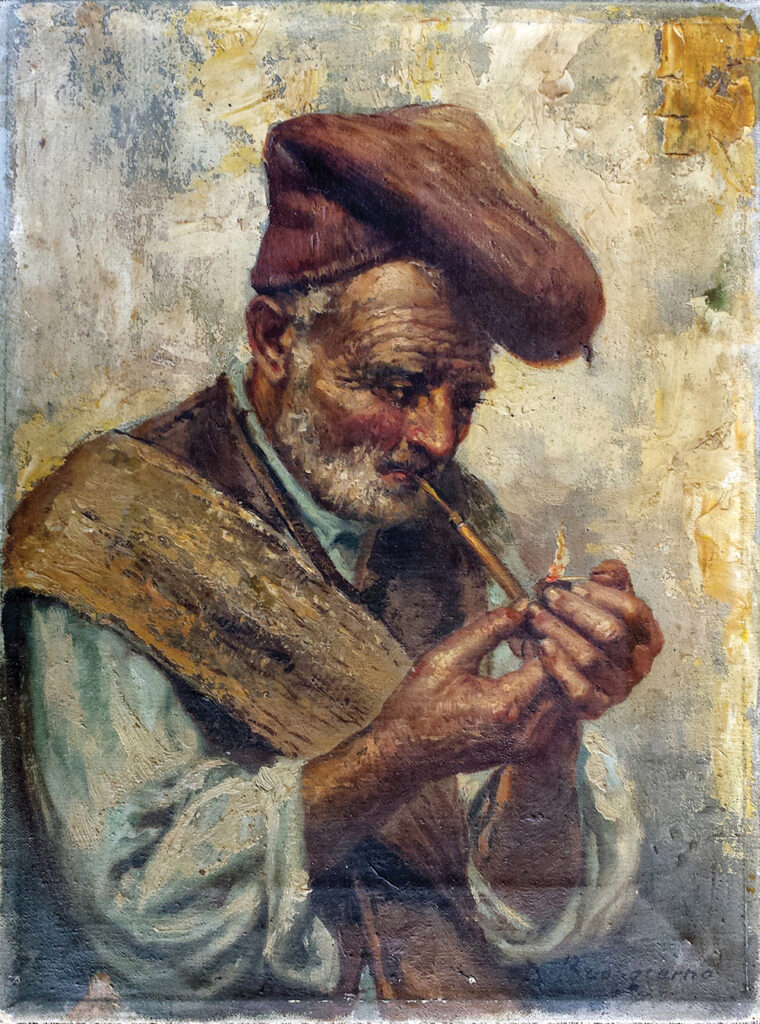
©2013–2019 Individual private collector. All rights reserved.
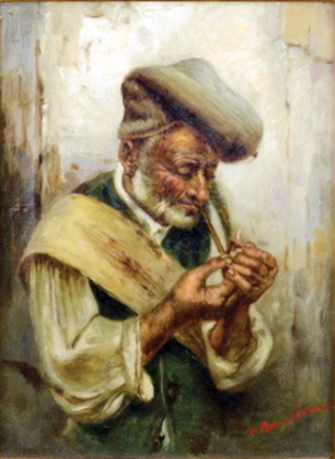
©2013–2019 Individual private collector. All rights reserved.
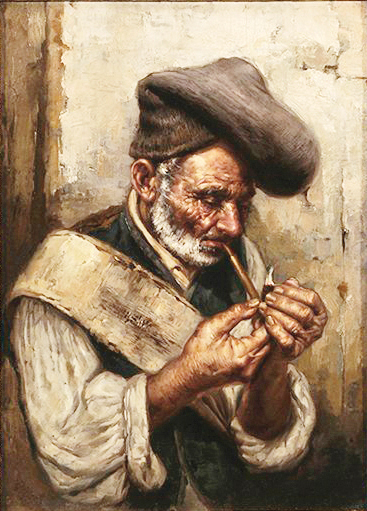
©2016 Tamarack Shack Antiques. All rights reserved.
There are also paintings of this model by Vincenzio Busciolano and Raffaele Frigerio, two Neapolitan artist contemporaries of Buongiorno, who both also studied at the Royal Academy of Arts in Naples, at the same time as Buongiorno.
At first I was thrilled to be able to confirm that the three artists knew each other, because I assumed they hired a model together.
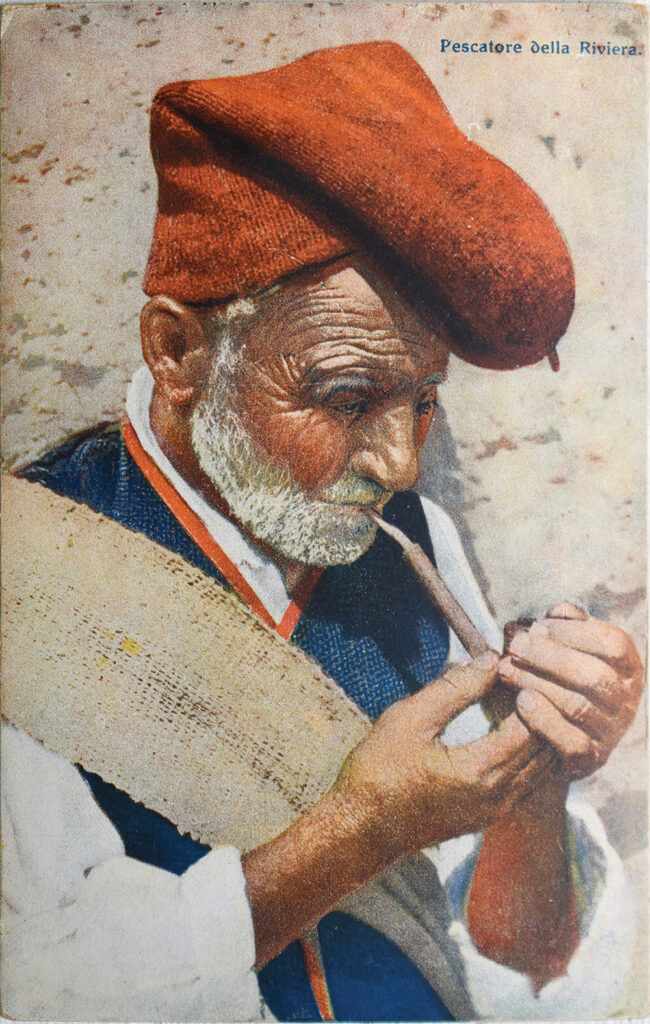
Circa 1900 Neapolitan postcard, Edition Guggenheim & Co., Zurich, 14433 Déposé.
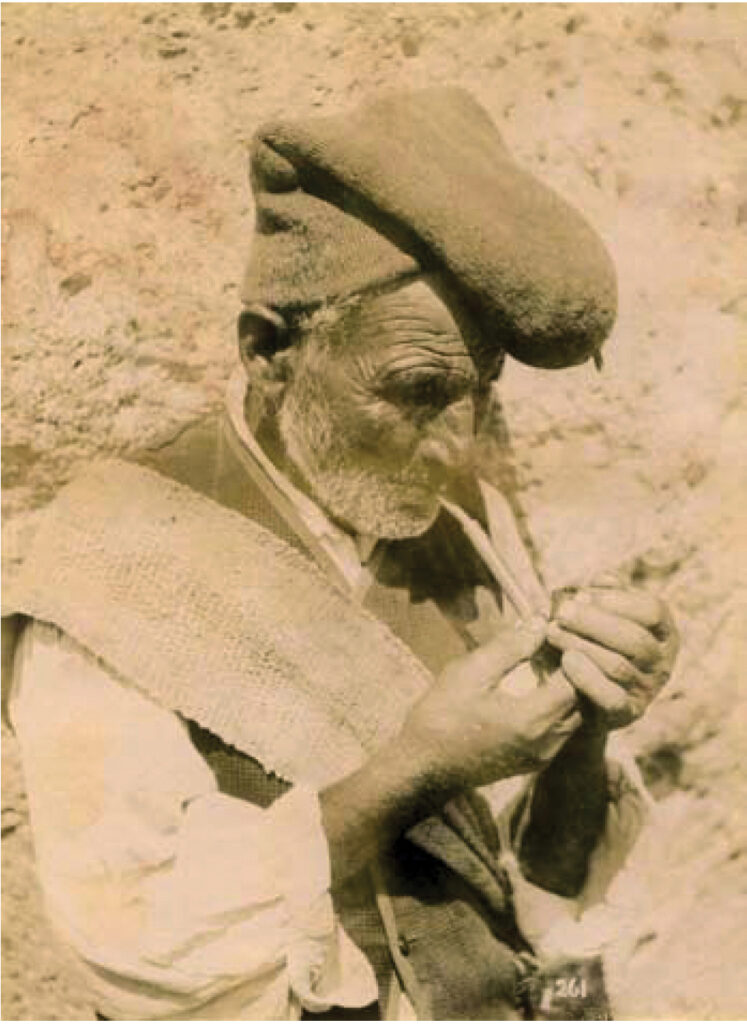
Pasquale and Achille Esposito photographers, 261 (negative number in image), Fisherman smoking a pipe, 17×12.5 cm., Historical Photographs Library, National Museum of San Martino, Naples, Italy.
Then I found a tourist postcard of the period—of the same model, in the same pose—which proved otherwise. It seems more likely that all three artists worked from that postcard, either together or independently of each other.
Then I found a black and white source photograph of the man in the postcard, suggesting that the distance from model to commercial images was short and perhaps all of these men knew each other in Naples—model, photographer, postcard printer, and painters.
Other Examples
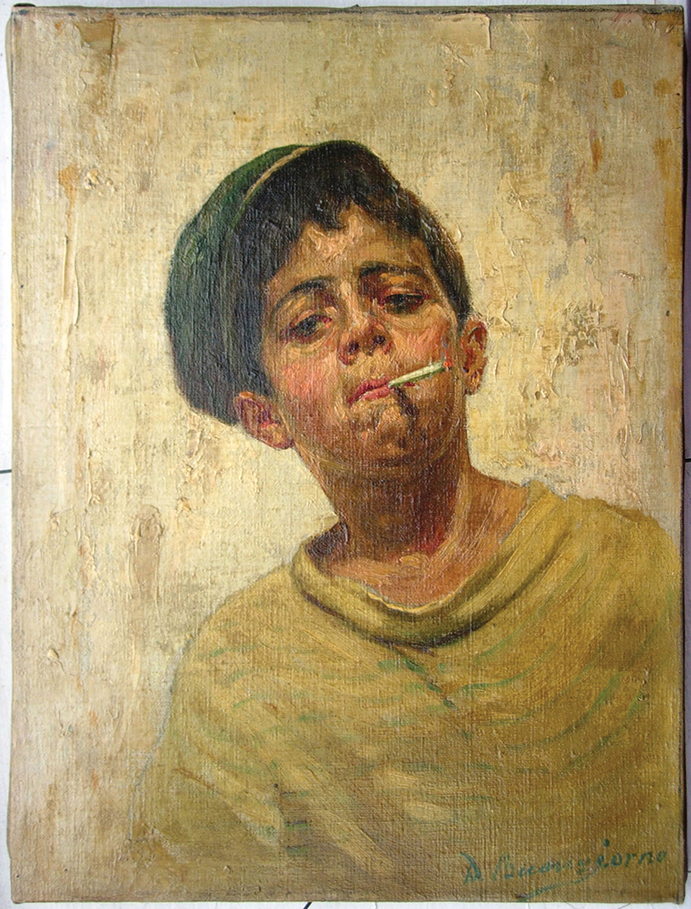
Donatus Buongiorno, Boy Smoking Cigarette, circa 1900, oil on canvas, 16 x 12 inches, signed D. Buongiorno, lower right, private collection.
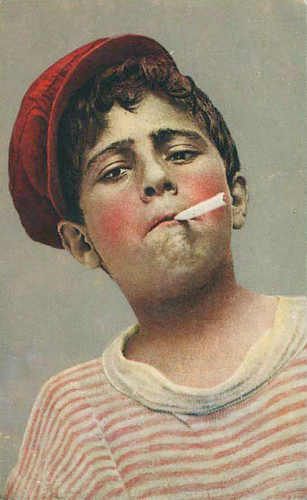
Neapolitan postcard, photograph by Aurelio Caggiano, circa 1900, hand colored.
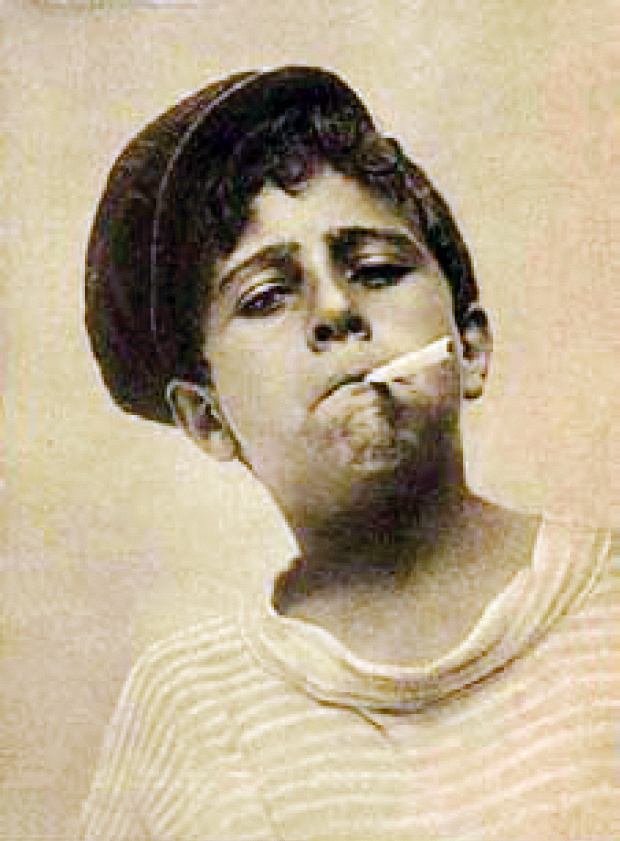
Neapolitan postcard, photograph by Aurelio Caggiano, circa 1900.
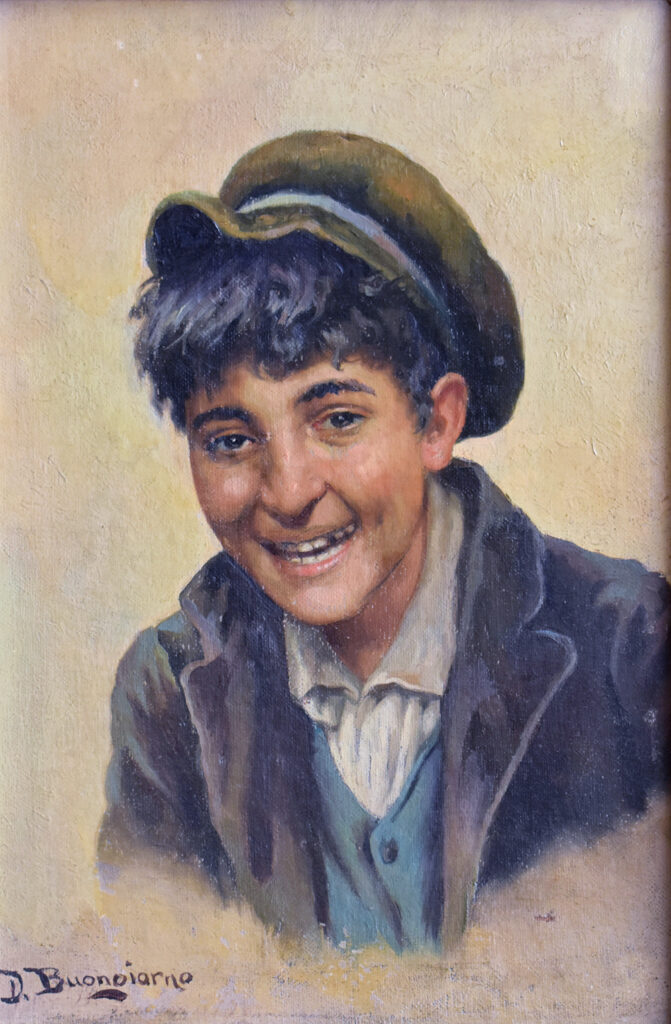
Donatus Buongiorno, News Boy with Blue Vest, circa 1900–1920, oil on wood, 10 x 7 inches, signed D. Buongiorno, lower left, private collection. ©2022 Janice Carapellucci. All rights reserved
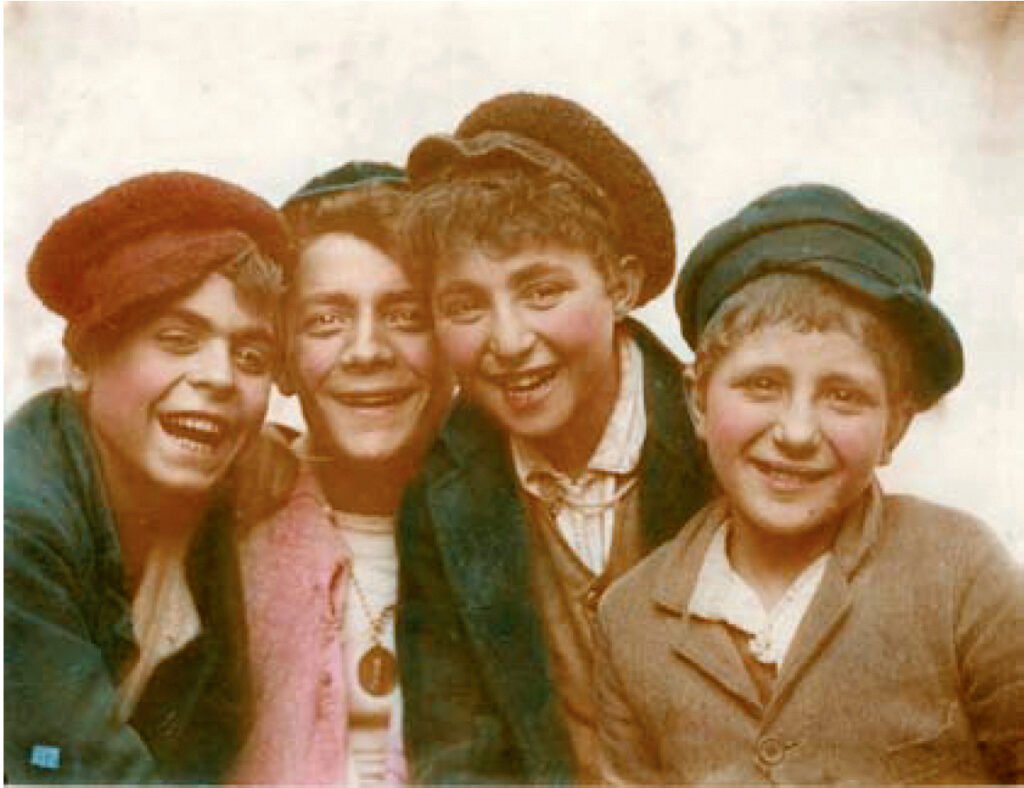
Photograph by Aurelio Caggiano, circa 1905, group of street boys, photographic print on silver bromide gelatin paper, 20×25 cm., hand-colored.
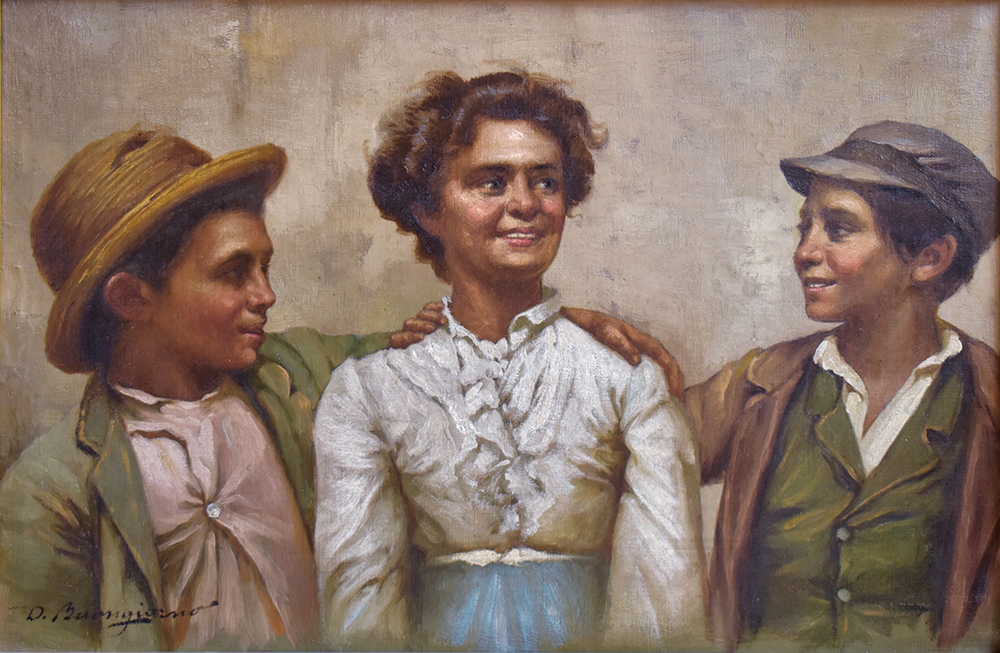
Donatus Buongiorno, Woman with Two Boys, circa 1900, oil on canvas, 12 x 18 inches, signed D. Buongiorno, lower left, private collection. ©2022 Janice Carapellucci. All rights reserved.
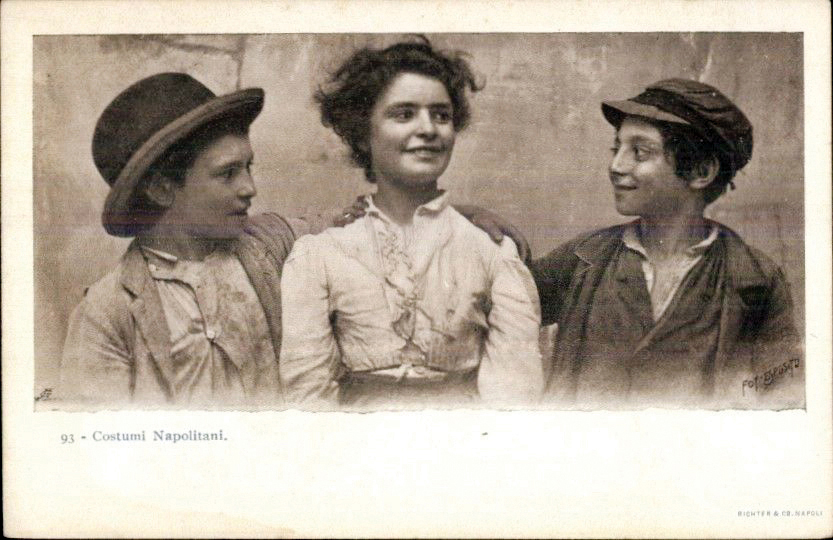
Circa 1900 Neapolitan postcard, Pasquale and Achille Esposito photographers.
Dear Madam
I’d like to congratulate you on the interesting information you publish here.
Unfortunately, I don’t have any information I can give you about your artist ancestor. However, I would like to ask for your help in identifying the source of a photograph published in your post of July 2022.
The image is captioned “Neapolitan postcard, photograph by Aurelio Caggiano, circa 1900”.
I am an art historian and curator at a national museum in Portugal. I was recently asked to provide an expert opinion on a painting attributed to a Portuguese artist who died in 1884. The painting, like Bongiorno’s, depicts precisely the boy smoking in Caggiano’s photograph. In fact, I’ve managed to find nearly 20 versions of this representation painted by different artists . It was, one can see, an extraordinarily popular subject. But the painting that has come into my hands raises many doubts. If I can be absolutely sure that the photograph is by Aurelio Caggiano, then I’ll have a way of proving that the signature and date on the painting is a fake.
Can you tell me in which photo archive I can find precise information about this photograph and the photographer?
If the photograph was undoubtedly taken by Caggiano, it certainly wasn’t taken in 1884, as Caggiano would have been 13 or 14 years old at the time.
If the photograph was made in 1900, the painting was definitely not made in 1884.
I’ve been searching in the databases of Alinar’s archve and also in Historical Photographs Library, National Museum of San Martino, but I wasn’t able to find this specific photograph, you realy did a very godd research!
Thank you in advance for any help you can give me on this
Best regards
Ana Paula Machado Santos
Oh Ms. Santos: Thank you for your inquiry. From one researcher to another, don’t we love to flaunt our victories? Giovanni Fanelli, Italian architect/photographer/photography historian/curator is an expert in 19th-century photographs of Neapolitan scenes and people that were made into tourist postcards circa 1900. I found the photos by Aurelio Caggiano in Fanelli’s publicationAurelio Caggiano scultore fotografo a Napoli<#ital> from 2020. You can find Fanelli here https://www.archinform.net/arch/11446.htm and here https://www.leonardolibri.com/autore-7850-giovanni-fanelli.html. Send me a private note using my email below, and we can talk further.